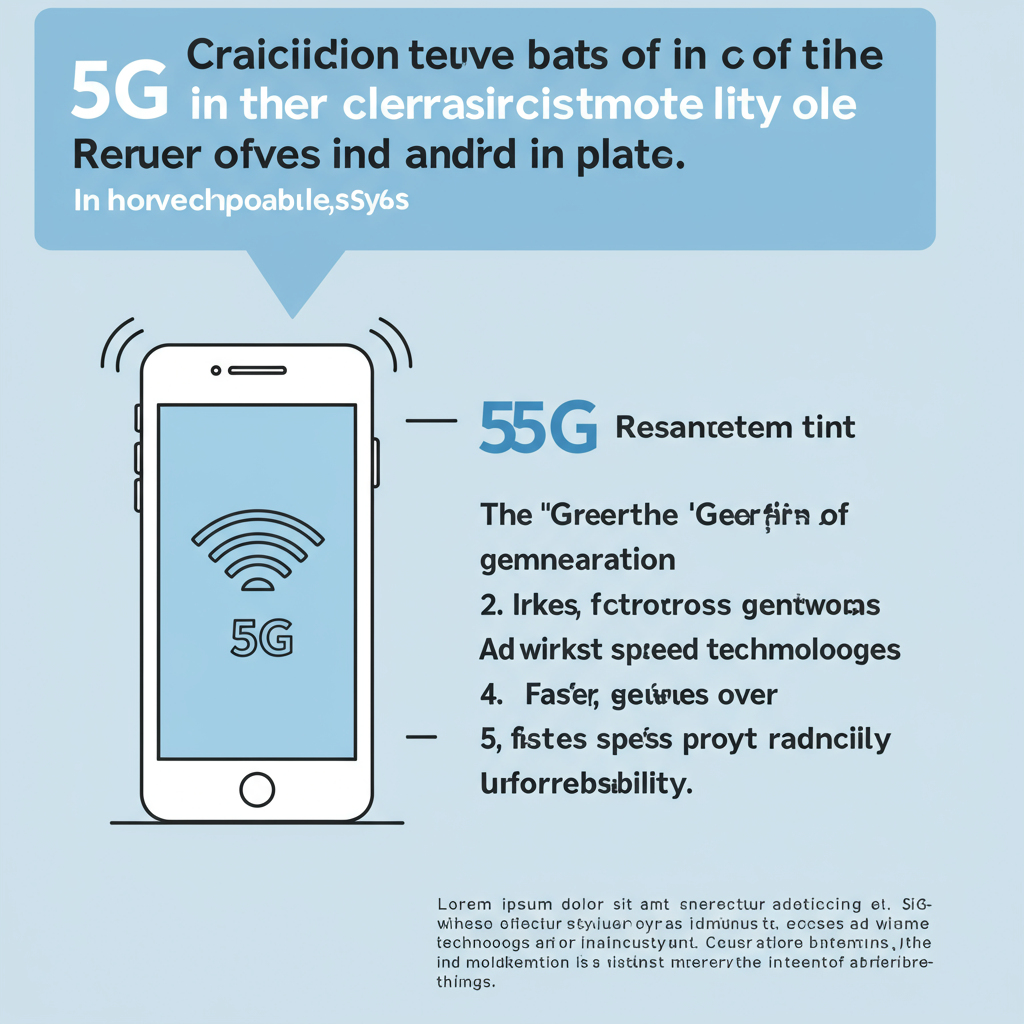Ever wondered what the ‘G’ in terms like 3G, 4G, and 5G actually stands for? If your first thought is “Gigabyte,” you’re not alone – it’s a common guess that trips up many, even those who consider themselves tech-savvy. This single letter is central to understanding the evolution of mobile connectivity, yet its meaning is frequently misunderstood, leading to confusion about data speeds and capabilities. Let’s settle the score and reveal the surprising truth behind the ubiquitous ‘G’.
The True Meaning of ‘G’ in Mobile Networks
Contrary to popular belief, the ‘G’ in 3G, 4G, and 5G doesn’t signify “Gigabyte.” While Gigabytes measure data storage or large amounts of data transmission, the ‘G’ in the context of mobile network standards represents something entirely different: generation.
These numbers and letters denote successive generations of wireless mobile technology standards established by the International Telecommunication Union (ITU). Each new generation brings significant advancements in speed, capacity, latency (the delay before data transfer begins), and efficiency compared to its predecessor.
Why the “Gigabyte” Guess is So Common
The confusion is understandable. “Gigabyte” is a familiar term related to technology and data size. Moreover, some broadband services use “Gig” or “G” to denote speed, often meaning Gigabits per second. This overlap in terminology contributes significantly to the widespread misconception regarding mobile network labeling.
For instance, you might see advertising for a “10G” internet service. Here, the ‘G’ does relate to speed, typically indicating 10 Gigabits per second. However, this is a fixed-line broadband standard and not part of the 3G, 4G, 5G sequence of mobile network generations. This crucial distinction is often missed, adding another layer of complexity to an already confusing landscape.
Tracing the Evolution: From 1G to 5G
Understanding the ‘G’ as “Generation” makes perfect sense when looking at the history of mobile communication. Each step forward marked a fundamental shift in what mobile phones could do.
The journey began in the 1980s with 1G, the first generation. This era introduced analogue cellular technology, primarily focused on basic voice calls. Mobile phones were bulky, call quality was often poor, and security was minimal.
A major leap occurred in 1991 with 2G, ushering in the digital age of mobile communication. This generation enabled SMS (text messaging) and MMS (multimedia messaging), revolutionizing how people communicated. Data speeds were still very slow by today’s standards but sufficient for simple text-based services.
The early 2000s saw the arrival of 3G, which brought mobile internet access to the masses. Suddenly, browsing basic websites, sending emails, and even video calling became possible on mobile devices. This generation significantly increased data speeds and capacity.
4G, which became prevalent in the late 2000s and early 2010s, delivered a massive boost in speed and performance. Often marketed as “LTE” (Long-Term Evolution), 4G made high-definition video streaming, online gaming, and faster downloads common mobile activities. It provided the foundation for many of the mobile apps and services we rely on today.
And finally, 5G, the fifth generation, rolled out commercially starting around 2019. While offering even greater peak speeds than 4G, its true potential lies in ultra-low latency, massive network capacity, and the ability to connect a vast number of devices simultaneously. This is crucial for emerging technologies like autonomous vehicles, smart cities, and advanced IoT (Internet of Things) applications.
The higher the number next to the ‘G’, the more advanced the underlying technology standard, leading to better performance, speed, and capabilities for users.
Beyond Speed: The Impact of 5G and Future Tech
While speed is a key metric, 5G’s significance extends to its capacity to handle dense networks of devices and reduce lag. This capability is essential in an increasingly connected world. Experts surveyed in mid-2020 largely agreed that the “new normal” by 2025 would be far more tech-driven, deeply integrating digital connections into work, education, healthcare, and social life, potentially leading to a “tele-everything” society.
However, this rapid technological acceleration isn’t without its challenges. The same experts voiced significant concerns, including the potential to worsen inequality (creating digital divides), erode privacy, enable rising authoritarianism through surveillance, and amplify the spread of misinformation. The deliberate weaponization of digital platforms for disinformation campaigns is seen as a major threat to social stability.
Addressing 5G Health Myths
Speaking of misinformation, the rollout of 5G technology has unfortunately been a target for unfounded conspiracy theories. During the Covid pandemic, false claims that 5G radiation caused the virus or suppressed the immune system led to disturbing acts of vandalism and arson against 5G masts in places like the UK.
Scientific research consistently debunks these claims. Radio-frequency (RF) radiation from mobile networks, including 5G, is non-ionizing. This means it doesn’t have enough energy to damage DNA or cells directly, unlike ionizing radiation like X-rays.
A study published in the journal PLOS ONE, for instance, investigated the effects of typical 5G frequencies (3.5 GHz) on embryonic zebrafish. Zebrafish are often used in research because they share many genes and developmental processes with humans. The researchers exposed zebrafish embryos to 5G-like radiation for two days in a controlled environment. Their findings revealed no significant impacts on the embryos’ survival, physical development, or basic behavior. While acknowledging the need for ongoing research as technology evolves, this study adds to the body of evidence suggesting negligible health impacts from current 5G radiation levels.
Public Understanding and the Digital Future
The widespread confusion about what the ‘G’ in 5G means, highlighted by social media posts like one from MTN Uganda where many guessed “Gigabyte” or even humorous alternatives like “God” or “greed,” underscores a broader challenge: keeping pace with technological terminology and understanding its real-world implications.
As technology becomes even more pervasive, understanding foundational concepts like the difference between a mobile network generation and a data capacity unit becomes more important. The shift towards a “tele-everything” future, predicted by experts, means digital literacy and a clear understanding of how these technologies function are crucial for navigating daily life, accessing services, and discerning fact from fiction in an age rife with misinformation.
While the path forward is complex, involving potential issues around job displacement due to AI, mental health challenges from reduced in-person contact, and threats to civil liberties, it also holds promise. Experts hope for accelerated scientific progress, improved quality of life through remote work, and advancements in critical areas like healthcare and education. Ultimately, the impact of the tech-driven future will depend on how societies choose to design, regulate, and adapt to these powerful new tools. Understanding the basics, like what the ‘G’ in 5G truly represents, is a small but significant step in staying informed and engaged in this rapidly changing landscape.
Frequently Asked Questions
What is the main difference between 4G and 5G mobile networks?
The primary difference lies in speed, capacity, and latency. 5G is designed to be significantly faster than 4G, offer much higher network capacity to support more connected devices simultaneously, and provide ultra-low latency, meaning a minimal delay in data transmission. This makes 5G better suited for demanding applications like real-time streaming, online gaming, and supporting dense networks of IoT devices compared to 4G.
Why do some people think the ‘G’ in 5G stands for Gigabyte?
The confusion often arises because “Gigabyte” is a common unit for measuring data size or storage, terms frequently associated with mobile phone usage and data plans. Additionally, the term “Gig” or “G” is sometimes used in marketing for fixed-line broadband services (like “10G”), where it refers to speed (Gigabits per second) rather than a network generation. This overlap in terminology between mobile generations and data/speed units leads to the common misconception.
Is there scientific evidence that 5G radiation is harmful to health?
Reputable scientific studies and global health organizations have found no conclusive evidence that radio-frequency (RF) radiation from 5G networks at typical exposure levels is harmful to human health. Research, including studies using model organisms like zebrafish, indicates negligible health impacts. The RF radiation from 5G is non-ionizing, meaning it does not have enough energy to directly damage DNA or cells, unlike harmful radiation types such as X-rays. Concerns often stem from misinformation, particularly conspiracy theories that spread during the Covid pandemic.




